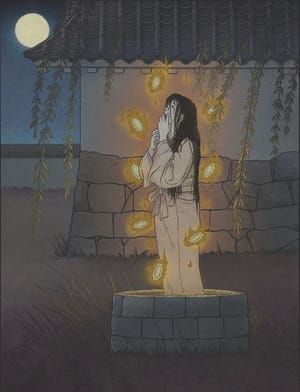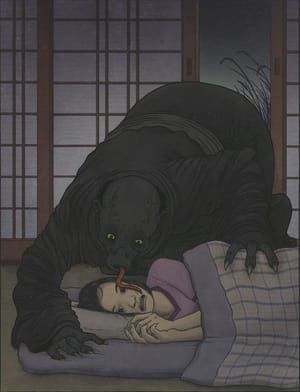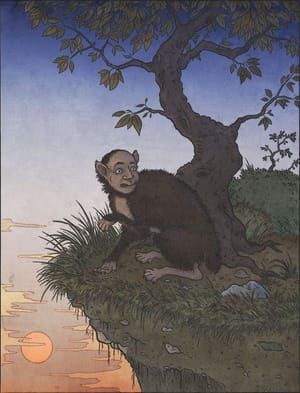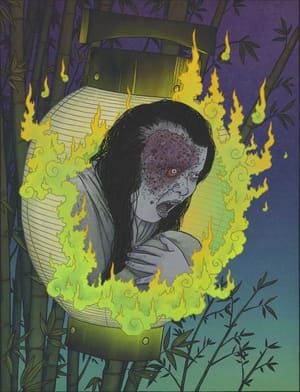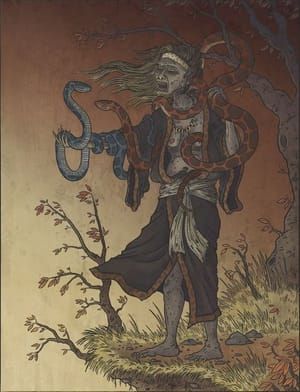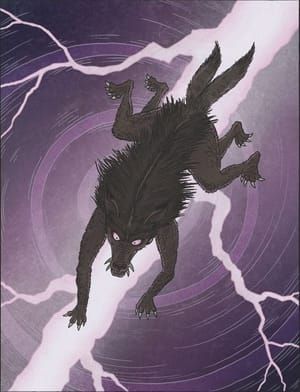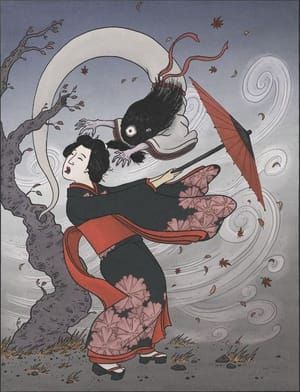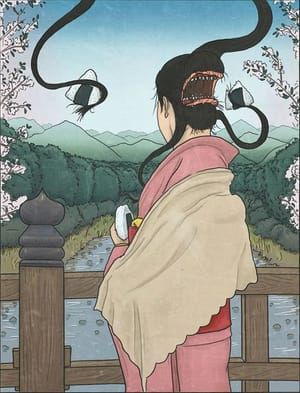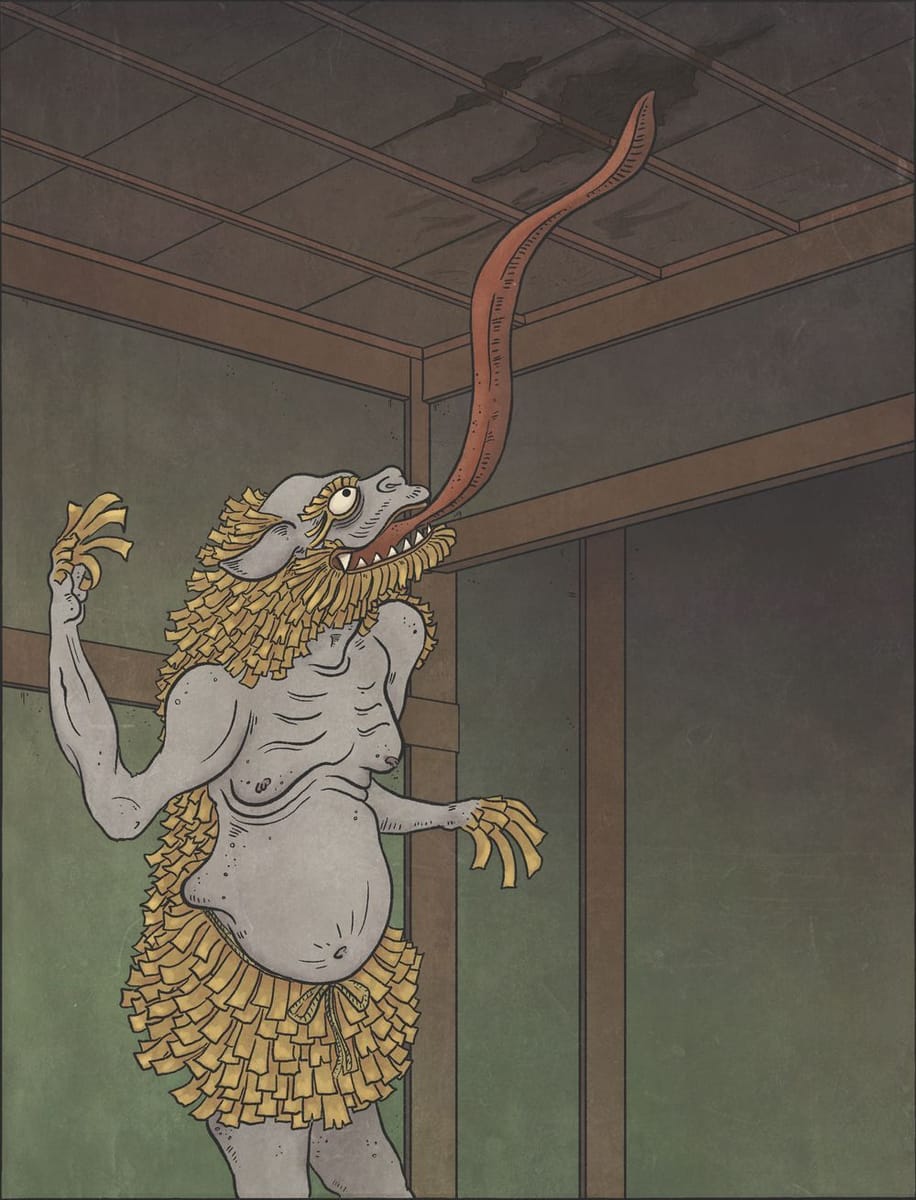

Tenjōname, 2017
Matthew Meyer
天井嘗
Tenjōname is a tall yōkai with a very long tongue. It appears in houses with tall ceilings, particularly in the cold months when light cannot reach all the way to ceiling and casts weird shadows into the rafters. It’s body is covered with strips of paper which resemble a matoi—the paper flags carried by Edo period firemen.
Tenjōname is named for its primary activity: licking ceilings. The older a house gets, the more dust and grime collects in hard-to-clean places such as the ceiling. This attracts tenjōname, who lick the dirty ceilings to feed on the filth. The telltale sign that a tenjōname has been licking a ceiling is the appearance of dark stains and splotches on ceilings, walls, and support pillars.
Tenjōname first appears in Toriyama Sekien’s Hyakki tsurezure bukuro, although its appearance seems to be inspired by older yōkai scrolls. Like many of the entries in that book, it appears to be a pun based on one of the essays in Yoshida Kenkō’s Tsurezure gusa. Essay number fifty five gives advice on building a house, and states that too high a ceiling would make winters feel too cold and lamplight seem to dark. Toriyama Sekien references this essay in his description of tenjōname. Although it is not specifically stated, based on its appearance and the fact that most of the yōkai in Hyakki tsurezure bukuro are tsukumogami, it is likely that tenjōname is a transformed matoi.
Since tenjōname was created in the 18th century, older folktales about it do not exist. However, since then a number of stories have been invented. One such story claims that a samurai from Tatebayashi Castle (the ruins of which are in present-day Gunma Prefecture) captured a tenjōname and used it to clean all the spiderwebs and grime from the ceilings of the castle. More recent legends claim that the stains left by tenjōname take the form of hideous human faces. Staring too long at these stains—particularly when they appear above your bed—can lead to madness and even death.
Matthew Meyer
artistArthur
Wait what?
